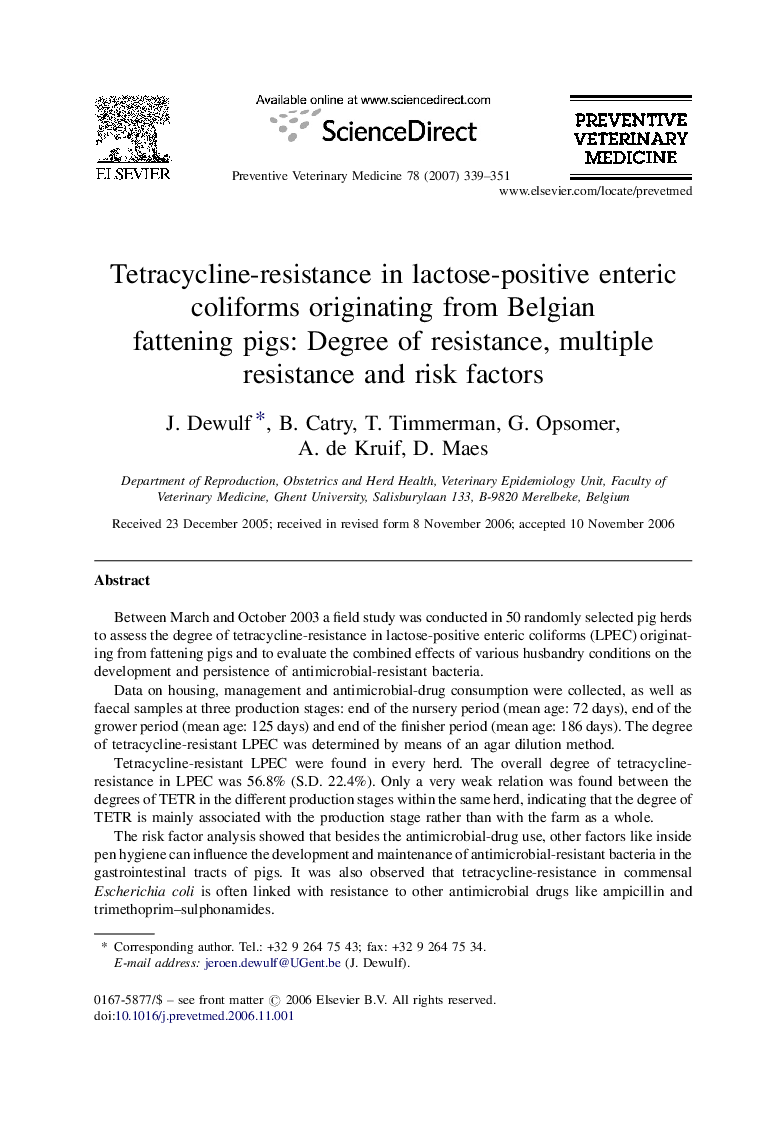| کد مقاله | کد نشریه | سال انتشار | مقاله انگلیسی | نسخه تمام متن |
|---|---|---|---|---|
| 2453630 | 1554227 | 2007 | 13 صفحه PDF | دانلود رایگان |

Between March and October 2003 a field study was conducted in 50 randomly selected pig herds to assess the degree of tetracycline-resistance in lactose-positive enteric coliforms (LPEC) originating from fattening pigs and to evaluate the combined effects of various husbandry conditions on the development and persistence of antimicrobial-resistant bacteria.Data on housing, management and antimicrobial-drug consumption were collected, as well as faecal samples at three production stages: end of the nursery period (mean age: 72 days), end of the grower period (mean age: 125 days) and end of the finisher period (mean age: 186 days). The degree of tetracycline-resistant LPEC was determined by means of an agar dilution method.Tetracycline-resistant LPEC were found in every herd. The overall degree of tetracycline-resistance in LPEC was 56.8% (S.D. 22.4%). Only a very weak relation was found between the degrees of TETR in the different production stages within the same herd, indicating that the degree of TETR is mainly associated with the production stage rather than with the farm as a whole.The risk factor analysis showed that besides the antimicrobial-drug use, other factors like inside pen hygiene can influence the development and maintenance of antimicrobial-resistant bacteria in the gastrointestinal tracts of pigs. It was also observed that tetracycline-resistance in commensal Escherichia coli is often linked with resistance to other antimicrobial drugs like ampicillin and trimethoprim–sulphonamides.These results illustrate that the epidemiology of antimicrobial resistance is influenced by antimicrobial-drug use, cross-resistance development and non-antimicrobial risk factors.
Journal: Preventive Veterinary Medicine - Volume 78, Issues 3–4, 17 March 2007, Pages 339–351